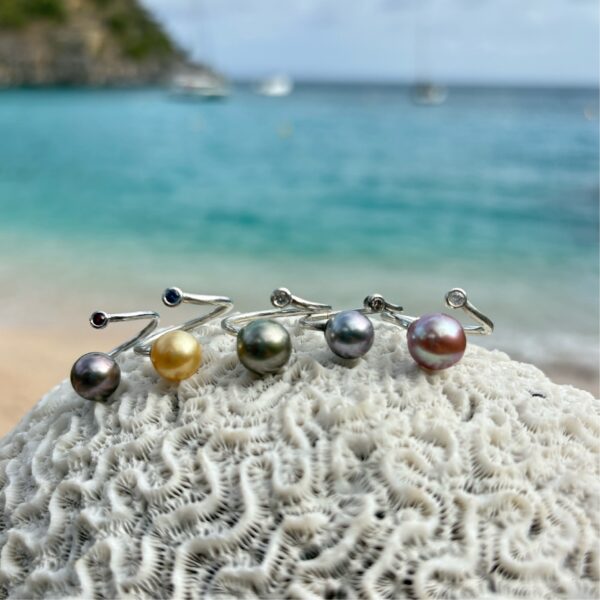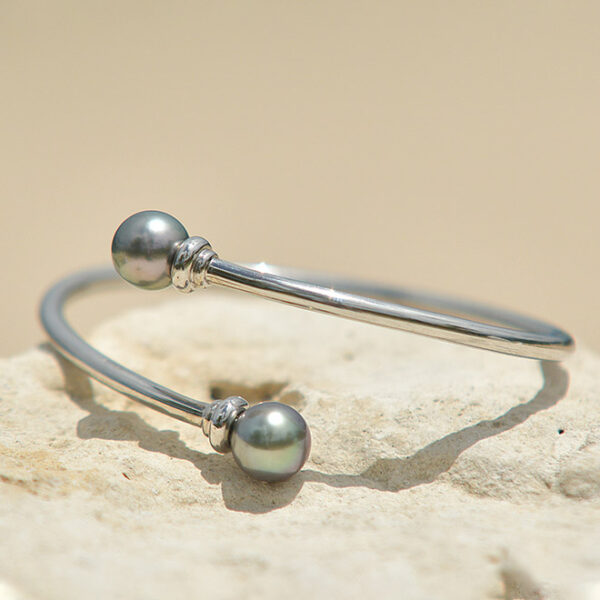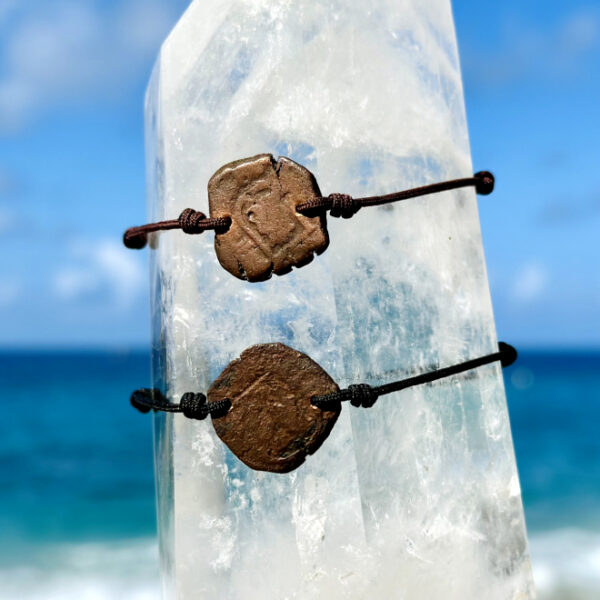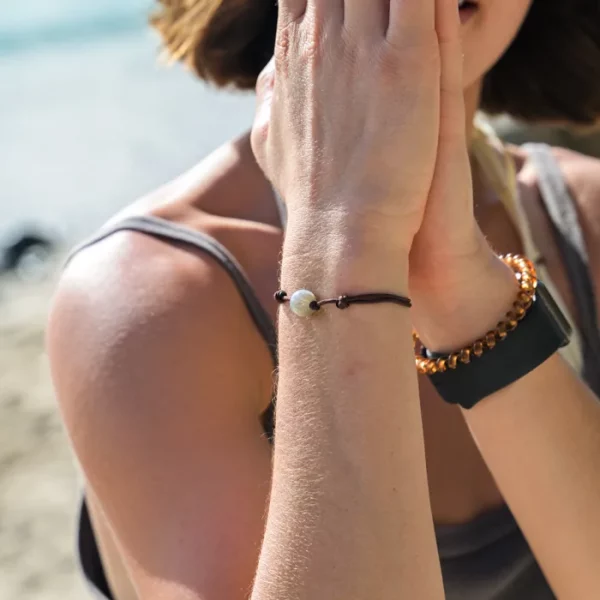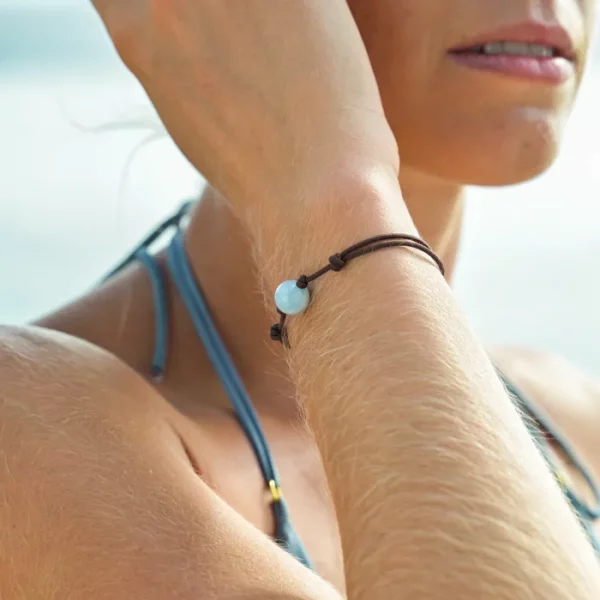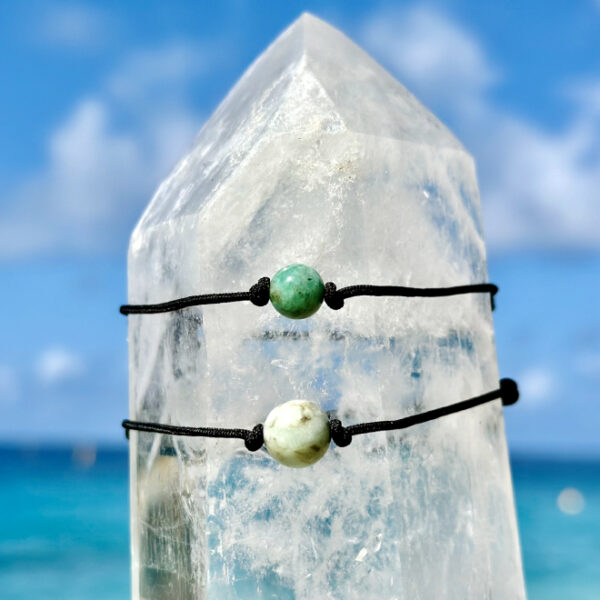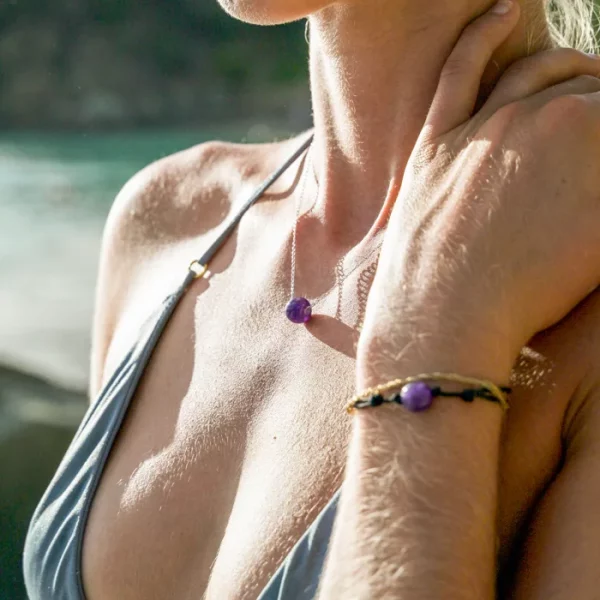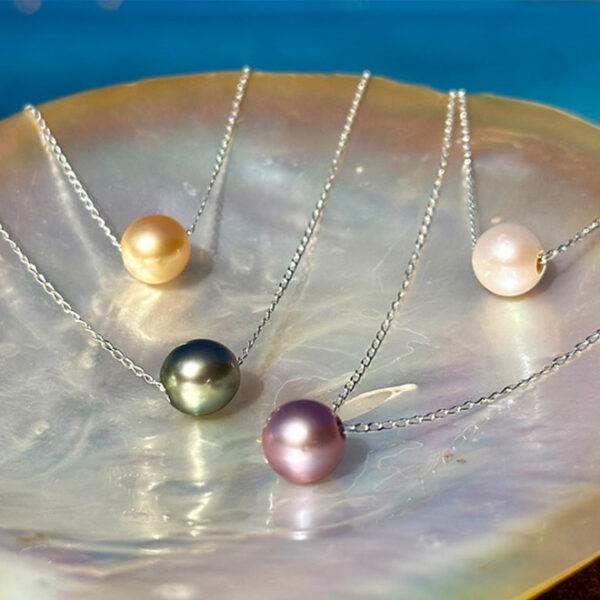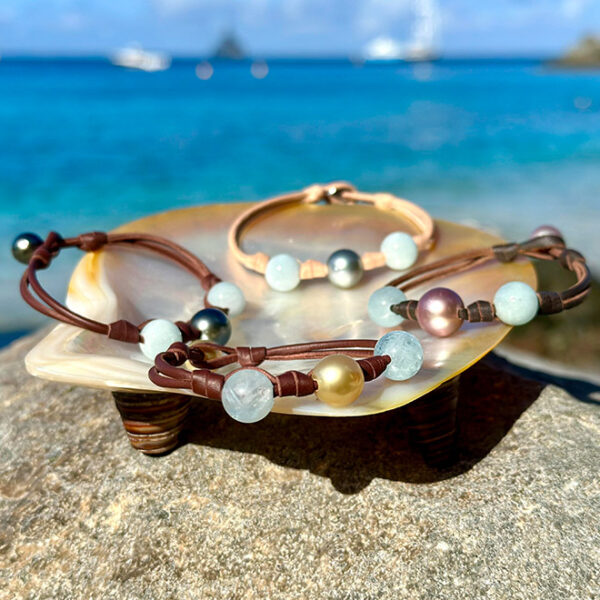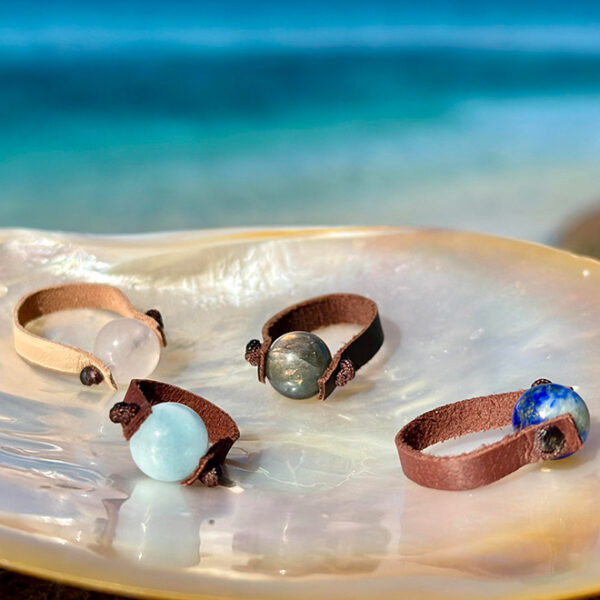You've added...
The color of cultured pearls, our tips to avoid the pitfalls !
Publié le 23/09/2024
Do you want to acquire a genuine cultured pearl, but don’t know how to choose it? Are you hesitating about which color of cultured pearls to pick? Then this article has been specially written for you! Kalinas Perles reveals everything you need to know about cultured pearls to avoid pitfalls. It’s essential to know that the origin of the pearls plays a fundamental role in their color. Pearls can come from freshwater or saltwater, and each type has its own unique color characteristics.
What is the origin and the different varieties of pearls?
- Freshwater pearls: Typically cultivated in lakes, rivers, and ponds, freshwater pearls are known for their wide range of natural colors, from white and cream to pink, lilac, and even peach and apricot. Their color is influenced by the type of mollusk used, as well as the nutrition and environmental conditions.
- Saltwater pearls: Cultivated in protected lagoons and bays, these pearls include Akoya, Tahiti, and South Sea varieties. Akoya pearls from Japan are traditionally white or cream with pink overtones, while Tahitian pearls are famous for their unique shades of black, gray, and peacock green, along with a variety of colors seen in the iridescence of the nacre. They offer the widest range of colors. South Sea pearls, from the Philippines, Australia, Indonesia, or Burma, are prized for their large size and beautiful shades of white, cream, and gold.
Color of cultured pearls: what does it signify?
- White and cream: White pearls symbolize purity, innocence, and simplicity. They are perfect for occasions like weddings or formal ceremonies.
- Pink, lavender, peach, apricot: These subtle and soft shades evoke femininity, tenderness, and grace. They are ideal for everyday wear or as a romantic gift.
- Black, gray, green, aubergine, blue: Black pearls, primarily from Polynesia, are associated with mystery, elegance, and sophistication. They are ideal for those looking to make a bold statement.
- Gold: Golden pearls, most often from the South Seas, represent wealth, opulence, and success. They are particularly valued for their rarity and luminous glow.
Choosing based on your skin tone
- Fair skin: People with fair complexions can opt for classic white or cream pearls that offer a subtle contrast. Pink or silver pearls can also add a soft glow to the skin. However, Tahitian pearls will stand out best on these skin types.
- Medium skin tones: Medium skin tones are versatile and can be enhanced by a variety of colors. Golden pearls, champagne shades, or even pink pearls can add warmth and radiance.
- Dark skin: Darker complexions are beautifully complemented by vibrant or deep-colored pearls. Tahitian pearls, with their colorful hues as well as lighter shades of gray and green, are particularly flattering, as are white and golden pearls, which can create a striking contrast.
Matching pearl jewelry colors with your outfit
- Formal outfits: For evening dresses or professional attire, which are often darker in color, opt for classic white, cream, or golden pearls. They add a touch of discreet elegance, providing a striking contrast without overwhelming your look.
- Casual outfits: With more casual outfits like jeans and a t-shirt, you can experiment with classic Tahitian pearl colors as well as bolder or more unusual ones. Pink, lavender, or even multicolored pearls can add a fun and trendy touch.
- Colorful outfits: If your wardrobe contains a lot of color, choose pearls that complement or contrast harmoniously with these hues. For example, golden pearls can beautifully complement warm-toned clothing.
- White and linen outfits: Tahitian pearls will be your best allies if you opt for a color contrast effect. However, if you prefer a more uniform look, white pearls will add a delicate touch to your style.
Light’s influence on color
- Natural vs artificial light: In natural daylight, pearls can reveal subtle shades and iridescences that aren’t always visible under artificial lighting. Conversely, pearls may appear more vibrant and colorful under appropriate lighting.
- The effect of light on different colors: White and cream pearls may look brighter and more radiant under soft lighting, while darker pearls may reveal hidden reflections and shades. Light can also affect the perception of the pearl’s size and shape.
When buying your genuine cultured pearl jewelry, it is preferable that the room where you are purchasing the pearl is well-lit. Ask for a white cloth or plate, place the pearl on it, and admire its reflections!
Current trends in pearl colors
- Contemporary color trends: Currently, bolder and more unusual pearl colors are gaining popularity. Shades like emerald green, deep blue, and even multicolored pearls are becoming trendy choices for those looking to stand out, and they are also among the most expensive.
- Classic vs modern pearls: White and cream pearls remain timeless choices, but modern variations like baroque pearls or pearls with irregular shapes offer a more contemporary and unique aesthetic.
- Influence of celebrities and designers: Pearl choices made by celebrities or influential fashion designers can also drive trends. Collaborations between jewelry creators and celebrities can introduce new ways to wear pearls in various colors. Media exposure can also influence trends—just one popular TV show can spark a new pearl fashion.
Naturally colored vs treated pearls
- Naturally colored pearls: Pearls obtain their colors naturally depending on the species of mollusk that produces them, their environment, and their diet. For instance, Tahitian pearls are naturally black or dark gray because the nacre that produces them is of that color. These pearls are often more valued due to their authenticity and rarity.
- Treated pearls: Some pearls undergo color treatments, such as dyeing or irradiation, to achieve specific hues that are not naturally available. While these pearls can be appealing and offer more color options, they can sometimes be more expensive due to the treatment but less valuable than natural pearls. Ask the jeweler selling the pearl, as they are obliged to inform you if the pearl has been treated or not. Note that dyed pearls do not retain their color long-term. The color softens, and the pearl loses its luster over time.
Choose the color of cultured pearls based on your event!
- Weddings and ceremonies: White or cream pearls are traditionally associated with weddings in Asia for their purity and elegance. They are a classic choice for brides or wedding gifts. Tahitian pearls are also popular for such occasions. Thanks to their pearly and multicolored reflections, they add contrast and elegance.
- Anniversaries and celebrations: Brighter or unique colors can be chosen to mark anniversaries or celebrations. For example, a pink, lavender, or apricot pearl can be a delicate choice for a wedding anniversary, symbolizing love and happiness.
- Professional use: For a professional environment, more subdued pearl colors like white, black, or gray are appropriate. They add a touch of sophistication without being too ostentatious.
Care and preservation of your cultured pearls!
- Gentle cleaning: Pearls should be cleaned gently. Use a soft, slightly damp cloth to clean them. Avoid chemical or abrasive cleaners, which can damage the surface of the pearl and dull its luster.
- Proper storage: Store pearls separately from other jewelry to avoid scratches. A soft fabric pouch or padded jewelry box is ideal. Avoid direct sunlight or heat, which can tarnish the nacre of the pearls.
- Avoid chemicals: Perfumes, hairsprays, creams, and other chemicals can damage the nacre of the pearls. It is advised to wear your pearls after applying these products.
Choosing colors based on age and personal style
- For the young and bold: Younger wearers may opt for more vibrant or experimental pearl colors, such as pink, peach, and apricot freshwater pearls, green and aubergine Tahitian pearls, or even multicolored options. These choices can reflect a dynamic personality and a bold sense of fashion.
- Classic styles for the mature: With age, choices often gravitate towards more classic and timeless colors like white, black, or gold. These elegant and refined colors are suited for a wide variety of occasions and can reflect mature sophistication.
- Adapting to personal style: Regardless of age, it is important that the color of your pearl jewelry matches your personal style. Whether it’s minimalist, bohemian, sophisticated, or avant-garde, the color choice should complement and express your unique personality.
